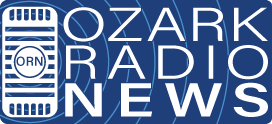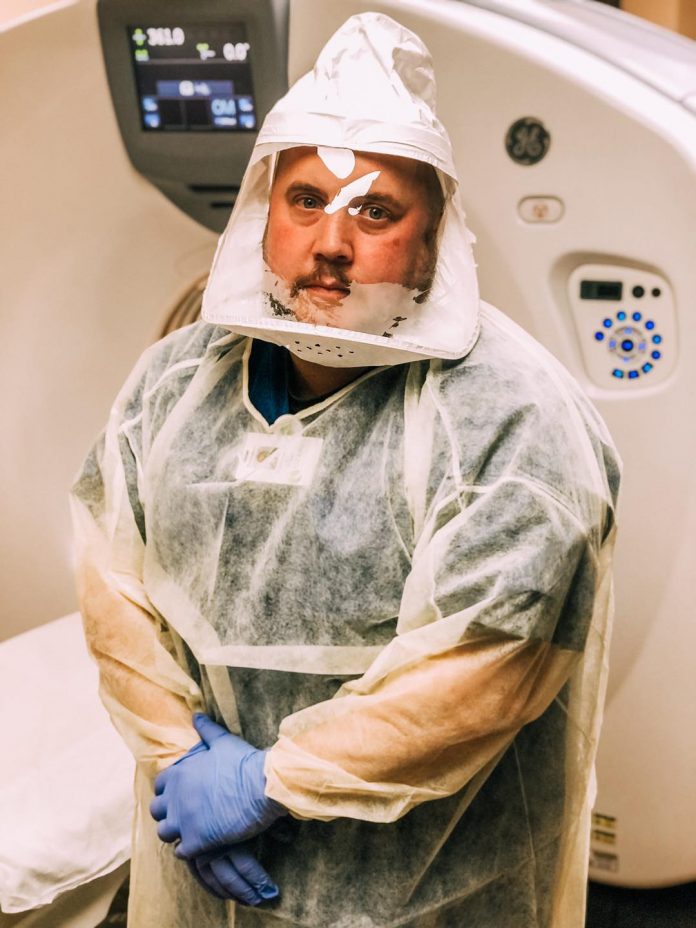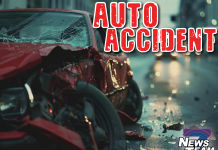WEST PLAINS, MO – Across the medical field, there are thousands of hidden heroes working who may not immediately come to mind when you think of those fighting COVID-19, but they are definitely on the frontlines, fighting for your health. Those working in Ozarks Healthcare’s Radiology and Computed Tomography (CT) Departments study the effects of COVID-19 all day and night.
Brandon Hull is one of Ozarks Healthcare’s CT techs who monitors COVID-19 constantly, scanning patients’ organs for damage and checking their functionality, which sometimes become very limited due to the virus’s effects. In addition to “normal” CT life – scanning bones, muscles, and blood vessels for disease or injury – Brandon and his team are heavily involved in the entirety our COVID-19 patients’ care.
“We see patients who may or may not be hospitalized,” Brandon said. “For those who may need to come to the Emergency Department for difficulty breathing and severe weakness, we’ll end up doing a pulmonary embolism study on them nine times out of ten. This helps us look for blood clots in the lungs, which COVID-19 is proven to cause. For the patients who do become hospitalized, we may perform the embolism study when they arrive and then sometimes, two or three days later. With COVID-19, blood clots can happen at any time.”
When scanning COVID-19 patients’ lungs, pneumonia is a sight techs like Brandon are getting used to seeing. Chest scans that Brandon and his team perform daily (and nightly – Ozarks Healthcare’s CT Department never closes because scans are needed for patients around the clock) often show a particular type of pneumonia that appears in both lungs. Pneumonia is typically detected in one lung. With COVID pneumonia, Brandon often sees the effect referred to as “ground glass” in the lungs. The “glass” is basically infection and damage that blocks the lungs from doing their job of breathing.
“One of the youngest patients I’ve seen who had terrible damage was 31 years old,” Brandon said. “I don’t know whether that patient lived or died. We’ve seen a lot.”
For severely ill COVID-19 patients, CT scans are still a part of life. Because of a patient’s critical status, it can take an entire team to get a picture of his or her organs.
“One of the most difficult parts is the man power it takes to do what we do for one very sick patient,” Brandon said. “When he or she gets to ICU status, we have nurses, respiratory therapists, and our techs to take care of one patient. We’ve even had intubations happen on our table.”
The weight of seeing what Brandon sees is heavy, just as it is for all healthcare workers, regardless of their department.
“It’s sad,” Brandon said. “It does take a toll on you. You see people your own age who can’t breathe on their own. That’s scary. Dying is not the only problem – the long term effects we are seeing are really terrifying. You can be 35 and lose your lung capacity for the rest of your life. You might never be able to have an active lifestyle.”
For those who are skeptical about COVID-19 and the risk it truly poses, Brandon wishes they could see what he and his team see.
“We hate seeing the same thing over and over,” Brandon said. “We don’t hate helping people – we absolutely love helping people. We get to diagnostically see what this does to your body. I wish you could come to work with me and see what I see. I have visual aids. We have scanned literally no one who has been vaccinated and has horrible lung damage from COVID. I hate seeing people go through this because it is something we can prevent.”
To Brandon, our CT team, our Radiology Department, and all of our heroes – thank you. We are better because of their compassion and dedication.






